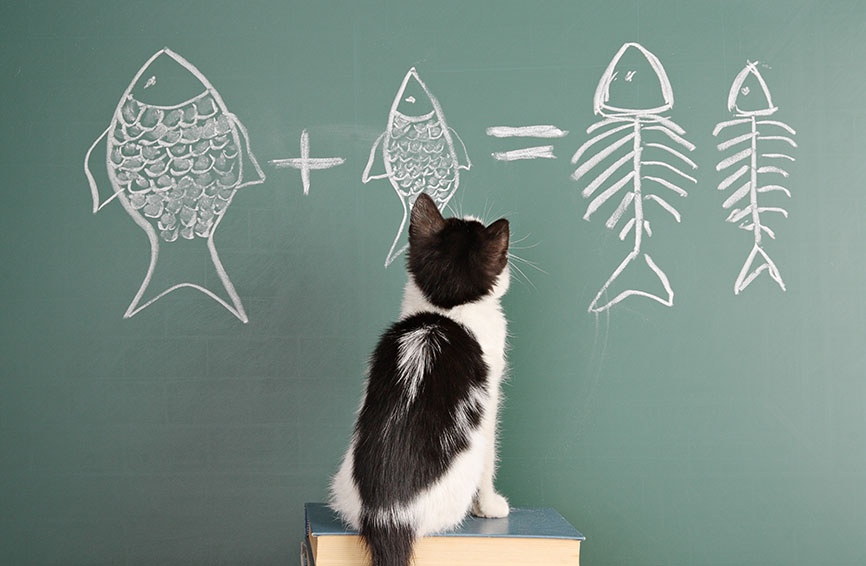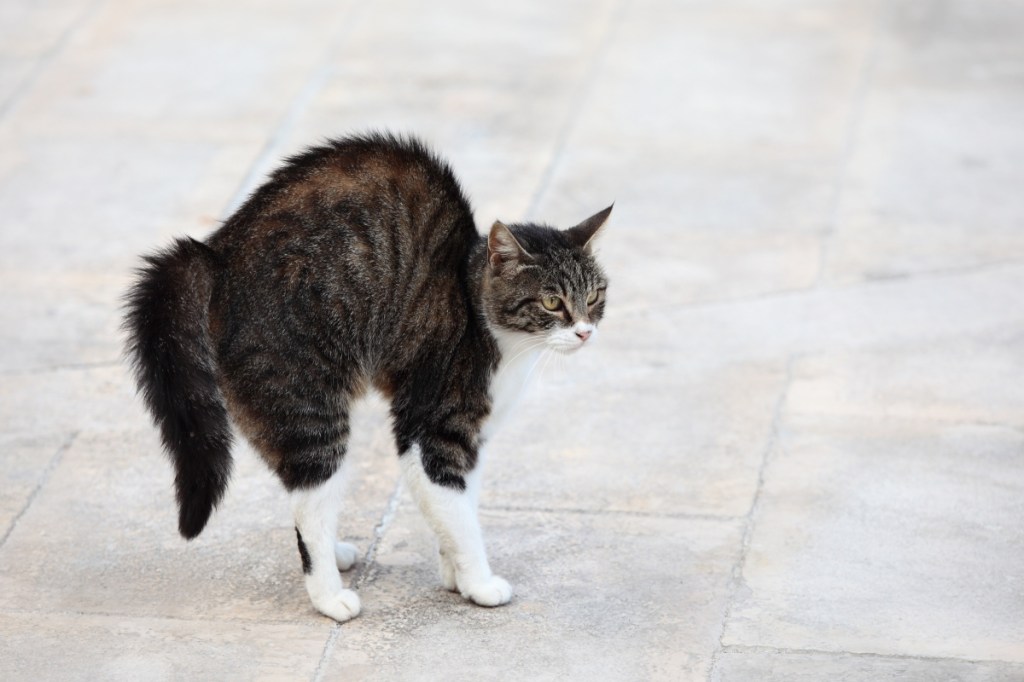Table of Contents
One moment, your cat is sweet and cuddly, or perhaps she is staring contentedly out the window. The next moment, she’s growling and hissing. What happened?!
A cat’s growl generally signals displeasure or fear and serves as a warning to stay away. A growling cat is not to be messed with! Learning why your cat growls will help you know what to do the next time you hear a threatening sound coming from her.
What Growling Looks Like
A cat’s growl is usually accompanied by a hiss, which can also sound a little menacing. In addition to making a hissing sound, a growling cat will show through its body language that something in their world isn’t right. Such body language includes:
- Bared teeth
- Flattened ears
- Arched back
- Hair standing up on end
- Slow tail movements
Why Do Cats Growl?
Generally, a growling cat is an unhappy cat. The growl serves as a ‘last resort’ before an attack or other aggressive action. Don’t be fooled, though—even if your cat is growling and hissing and looks threatening, she does not want to fight. She is hoping that her growl and tough-looking body language will be enough to make you, or another animal or person, back off and leave her alone.
Here are some situations in which your cat is likely to growl:
- Pain. Like people, cats don’t like being touched where it hurts. Because cats can’t say “Ouch, that hurts!”, they will growl to signal their displeasure. If your cat growls when you pet her in a particular area, schedule an appointment with your veterinarian to find out why your cat is in pain.
- Possessiveness. If your cat is possessive of a certain object, like her food bowl or her favorite toy, she will growl to warn you to back away from that object.
- Dominance. In multi-cat households especially, the more dominant cats may growl at the less dominant cats at mealtime to make the less dominant cats wait their turn to eat.
- Fearful or threatened by new people. Growls often signal a fear of something or someone new. For example, if you invite someone over to your home who your cat does not know, your cat may growl to indicate that she is afraid or feels threatened by that person. She’ll probably then run and hide until she feels it’s safe to come out.
- Old age. As cats age, they can lose their hearing, vision, and even cognitive abilities. A cat who does not hear or see very well can be easily frightened by their environment. Elderly cats with brain dysfunction may do strange things, such as stare and growl at the wall, because their brains are perceiving a threat that isn’t really there.
- Change in routine. Does your new job have you leaving and returning home at different times? Have you changed something about your daily habits? Cats like routine, so any change in routine can upset them. Your cat may growl because she doesn’t like your new routine or habits.
- Stress. Stress is a catch-all reason for why cats growl. Any of the above situations can be stressful for a cat. If your cat is growling, something has happened, even if you’re not exactly sure what, to make her feel stressed.
What to Do When Your Cat Growls
When your cat is growling, the best thing to do is leave her alone and let her calm down. If you disregard her growling and try to engage with her, do not be surprised if she swats at, scratches, or even bites you. Also, avoid scolding or punishing your cat when she growls; if you punish your cat for growling, you are taking away her warning signal to stay back.
In addition to giving your cat some space, make adjustments to your cat’s external environment to minimize the triggers for her growling. Here are some suggestions:
- For a multi-cat household, place the food bowls in different areas to avoid dominance issues at mealtime.
- When you have guests over, create a safe, quiet, and secluded space for your cat.
- Install blinds or drapes over your windows to limit your cat’s view of the outdoors.
- If your cat is in pain, give her pain medication as prescribed by your veterinarian.
Bringing it Together
Cats growl for many reasons, often due to displeasure or fear. If your cat is growling, give her some space and try different strategies to help her feel calm and safe in her environment. You may need to consult with your veterinarian to figure out exactly why your cat is growling and what you can do about it.







